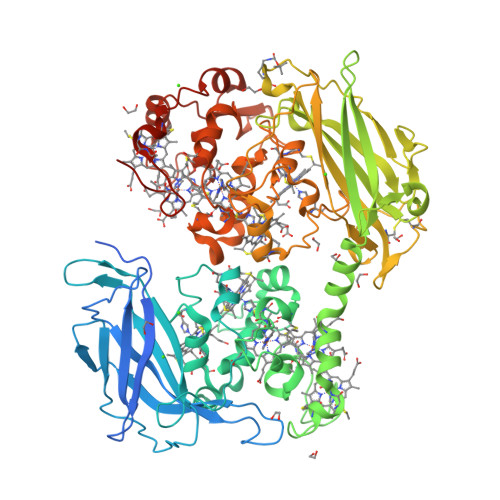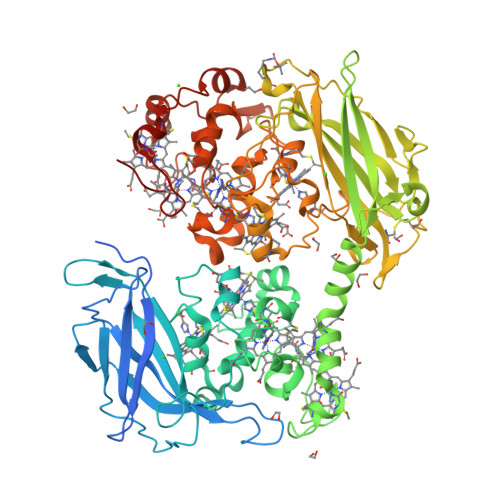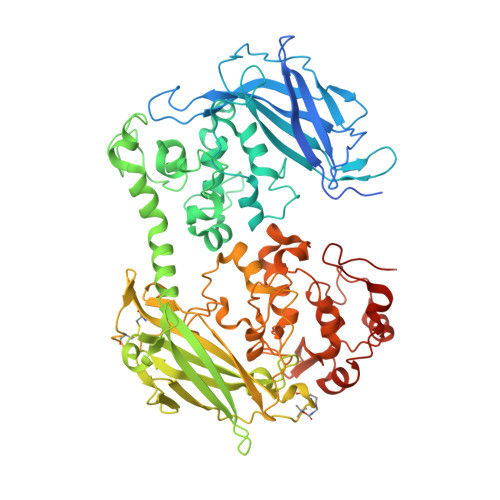Genetic Code Expansion in Shewanella oneidensis MR-1 Allows Site-Specific Incorporation of Bioorthogonal Functional Groups into a c -Type Cytochrome.
Lockwood, C.W.J., Nash, B.W., Newton-Payne, S.E., van Wonderen, J.H., Whiting, K.P.S., Connolly, A., Sutton-Cook, A.L., Crook, A., Aithal, A.R., Edwards, M.J., Clarke, T.A., Sachdeva, A., Butt, J.N.(2024) ACS Synth Biol 13: 2833-2843
- PubMed: 39158169
- DOI: https://doi.org/10.1021/acssynbio.4c00248
- Primary Citation of Related Structures:
8QBQ, 8QBZ, 8QC9 - PubMed Abstract:
Genetic code expansion has enabled cellular synthesis of proteins containing unique chemical functional groups to allow the understanding and modulation of biological systems and engineer new biotechnology. Here, we report the development of efficient methods for site-specific incorporation of structurally diverse noncanonical amino acids (ncAAs) into proteins expressed in the electroactive bacterium Shewanella oneidensis MR-1. We demonstrate that the biosynthetic machinery for ncAA incorporation is compatible and orthogonal to the endogenous pathways of S. oneidensis MR-1 for protein synthesis, maturation of c -type cytochromes, and protein secretion. This allowed the efficient synthesis of a c -type cytochrome, MtrC, containing site-specifically incorporated ncAA in S. oneidensis MR-1 cells. We demonstrate that site-specific replacement of surface residues in MtrC with ncAAs does not influence its three-dimensional structure and redox properties. We also demonstrate that site-specifically incorporated bioorthogonal functional groups could be used for efficient site-selective labeling of MtrC with fluorophores. These synthetic biology developments pave the way to expand the chemical repertoire of designer proteins expressed in S. oneidensis MR-1.
Organizational Affiliation:
School of Chemistry and School of Biological Sciences, University of East Anglia, Norwich Research Park, Norwich NR4 7TJ, U.K.





















